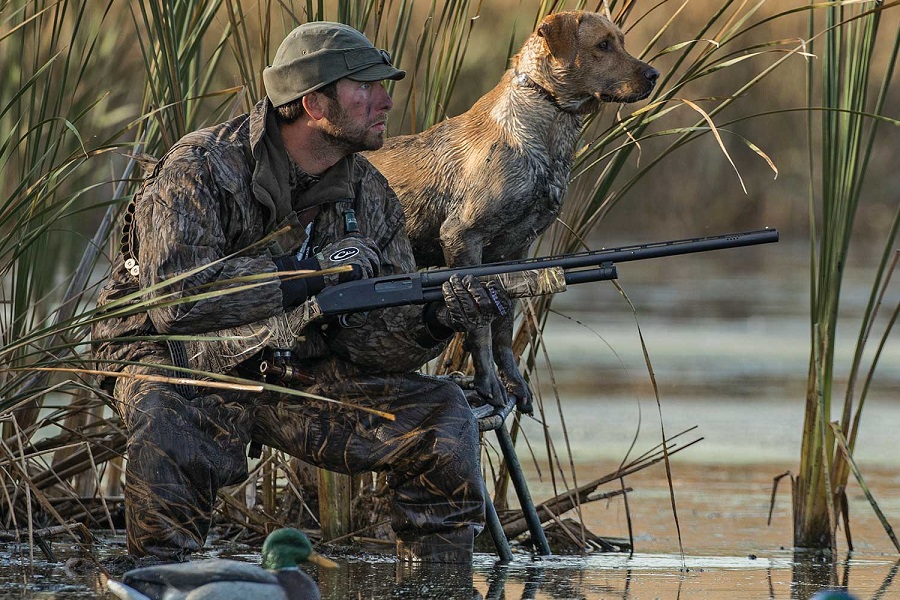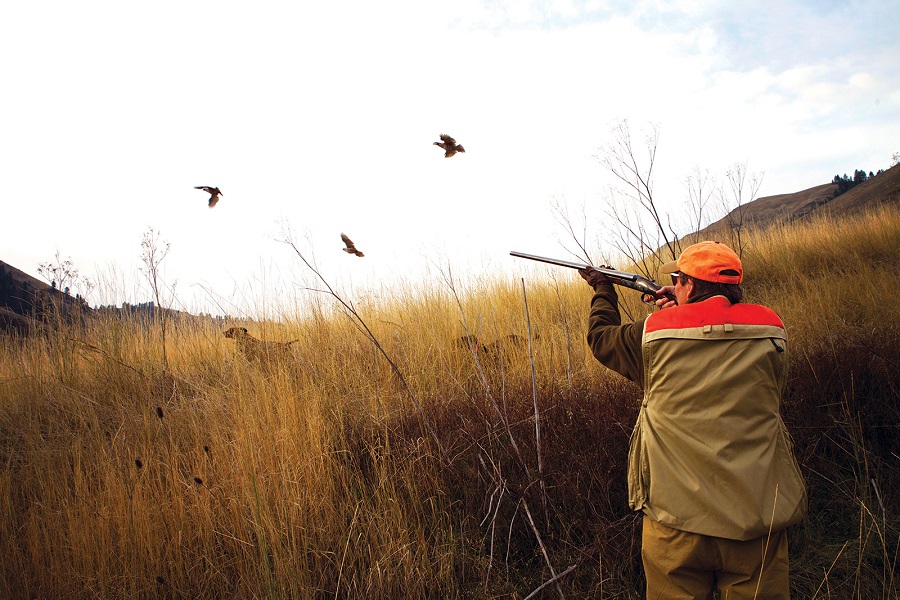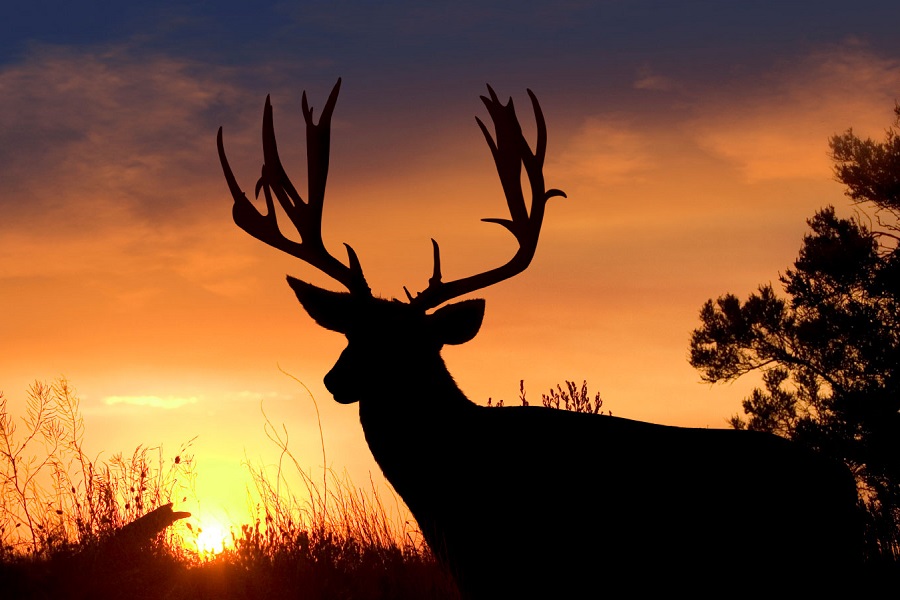Hunting face paint is usually an afterthought for many hunters. Look at any trophy photos where a couple of guys have bagged a huge buck, and you’ll see that not many people are using it.
Why? Well, it’s not the most comfortable thing, but it does increase your chance of remaining hidden from prey for a couple of reasons.
It’s a tricky thing to shop for, though, primarily because there aren’t a whole lot of brands creating it. So why do we need it, and what do we need to look for?
What Is Hunting Face Paint?
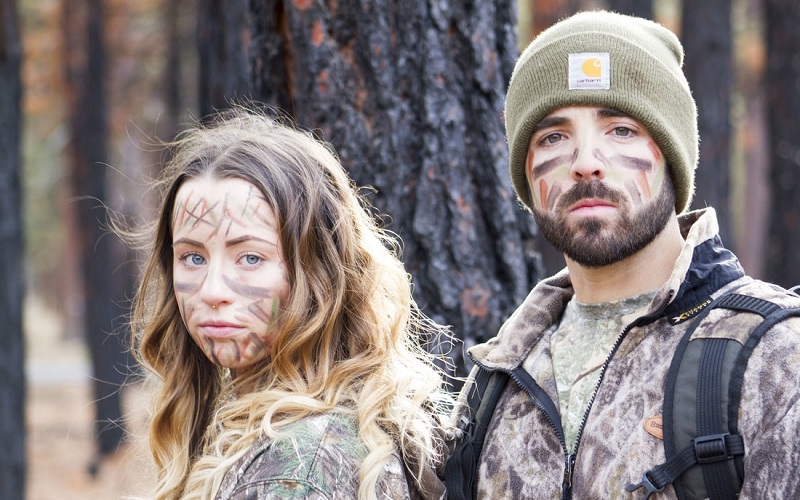
First, let’s define what hunting face paint is. It comes in either oil-based or clay-based forms, and it’s used to mimic the colors of the forest and trees so that you’re not sticking out like a big, sore pink thumb.
You might have camouflage boots, hunting gear, gloves, and a hat, but all that does is frame your face to look more obvious.
Hunting face paint can be applied up to twenty minutes before your hunt and usually does not come off until you decide to wash it off after the hunt. Some come with squeeze tubes; others will come in screw-top canisters, but either way, they’ll help conceal you.
Benefits Of Using Hunting Face Paint
Scent Reduction
You’re in the middle of the woods in heavy gear; you’re going to sweat. Sweat comes from your pores and is detectable by big and small game, which gives them this general sense of where not to go. Basically, your sweat could be ruining the rest of your scent game.
Hunting face paint will temporarily block your pores and prevent sweat from coming out, but it also has its own musk about it. It’s not something that’s wholly detectable by your nose, but it has earthy and natural aromas that will blend in with nature and give you the upper hand over your prey.
Dulling Vibrancy
When you’re decked out in camo but your windburned skin is showing, it’s like putting a spotlight on your face.
The vibrancy of your skin will be visible unless you do something about it. Face paint isn’t going to cover 100% of your skin, but it does enough to allow your complexion to blend in with the paint colors.
Helping With Windburn
You’re 10–12 feet up in a tree stand, or you’re downwind and the gusts are hitting you in the face. Either way, you’re going to look like a boiled lobster by the time you get back. Hunting face paint creates this hard mask on your face.
It’s flexible enough to move with the lines of your face as you smile or change expression, but the wind will hit it instead of the sensitive pores of your face.
While it’s not really a factual benefit, suiting up with some hunting face paint also makes you feel a little more involved in the hunt.
When you’re wearing all this big and bulky hunting gear, sometimes you feel more like a caddy than a hunter, but applying this gives you a BAMF feeling and gets you ready to hunt.
Difference Between Oil And Clay-Based Paint
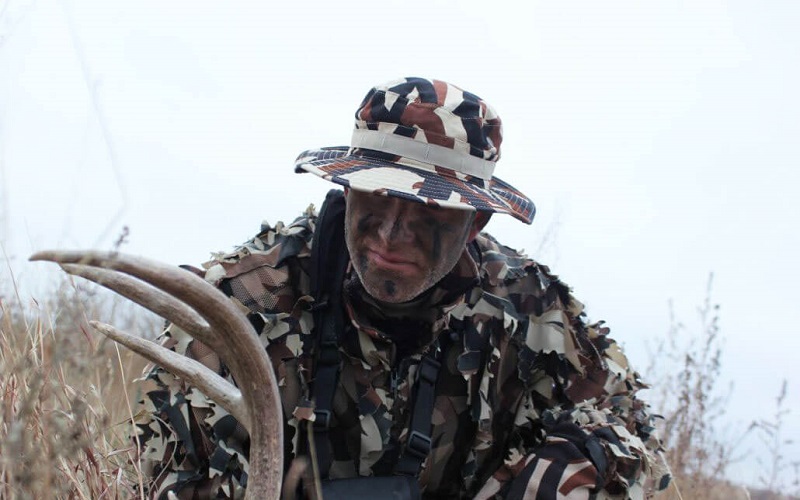
Before we start applying anything, you need to know the vast differences between oil-based and clay-based paints. There are basically two major factors that you have to consider.
Heat Resistance
It gets hot in the middle of nowhere, especially if you’re springtime hunting. Oil-based paints are just going to melt right off your skin and get messy, possibly staining your hunting jacket and creating grease spots.
Clay-based paints have a different concern, which is that they insulate your face and keep all that heat trapped inside. If you can’t sweat, you can overheat. It’s a toss-up here, but personally, we’d rather maintain our jacket than worry about a little extra heat.
Skin Health
Oil-based paints will clog your pores. The longer it’s on your skin, the more damage it’s going to do. You’ll have to exfoliate and take three hot showers before you can really feel it all leave your skin.
Those of you who are prone to adult acne will find that this is your worst nightmare. Clay-based paint sits on top of your skin and doesn’t cause this problem, though it is harder to get off.
So which is better? Clay-based paints, hands down, and that’s why you’ll see that they’re slightly more expensive. They are a little more difficult to work with, but it’s well worth it for the added benefits that you’ll receive.
Steps To Apply Face Paint Properly
- Begin by applying a healthy amount to your dominant hand. Apply in blotches or dots on different areas of your face. This should be entirely asymmetrical and non-specific. Gently rub those into circles in the areas where you applied them.
- Apply lines that contour your face. This includes wrinkles on your forehead, laugh lines, and the way that your cheeks and jaw meet. Smear them in quick, light streaks, and do not touch them again. This ensures your face doesn’t feel rigid during your entire trip.
- Apply paint to the remaining areas of your face that don’t have any and rub into the area with small circles. The end result is a few jagged lines followed by multiple layers of asymmetrical circular motions. This is your base coat.
- Apply a second coat similar to the first, working them in the exact same way. This will strengthen your hunting mask.
- Use your finger and paint lines in the areas around the edges of your face. This will likely be above your brows, on the edge of your chin, below your ears, and below your eyes. The more coverage, the better.
- Smudge those lines you just made so they don’t look like a perfect frame around your face.
- Allow your face paint to dry for the appropriate amount of time, as defined by the packaging.
Use this method every single time, and after a while, it’s only going to take 2–3 minutes to get ready just before you head out onto the hunting trail.
FAQs
How To Remove Hunting Face Paint?
Well, it has to come off eventually, doesn’t it? This only takes about thirty seconds once you get good at it, and about two minutes the first time around. Get a pack of baby wipes for the trip, even if you don’t have a baby.
These stay moist in the packages for ages (seriously, it’s like these things can’t even evaporate in extreme heat), and nothing is better than removing oily substances from the skin. After all, it’s what they’re designed to do.
Wipe away your eyes, eyebrows, nose, and mouth. You don’t want to get any of this paint where it doesn’t belong. Once the bulk is removed from your skin, gently wipe downward to remove residual paint.
What Patterns Do I Need?
The pattern doesn’t really matter, it’s all about how you apply it. You could take a pattern face paint and just wipe it on your face and find it far less effective at hiding your presence than a single-color face paint that you apply in the correct way.
How Long Does Hunting Paint Last?
Until you wash it off. Oil-based paints will begin to melt, but clay-based paints will stick to your skin like glue. They both have their own wash-off times, but for the most part, they will last on your face until they’re washed off in the right conditions.
When Should I Apply Hunting Face Paint?
If you’re going hunting with a friend and you’re not driving, you can begin your application just before you reach the campsite or parking lot. If you’re just day hunting, this allows you to leave it behind so as not to add extra weight to your hunting backpack. Every ounce counts.
This advice corresponds with the drying time on the bottle. If you decide to go with an oil-based hunting face paint, it will take considerably longer to dry than clay and might require you to apply it long before you approach the campsite. If you need to, you can apply it while you’re in your tree stand, but it’s always best to have everything set up before you head into the woods.
Ghillie In The Mist
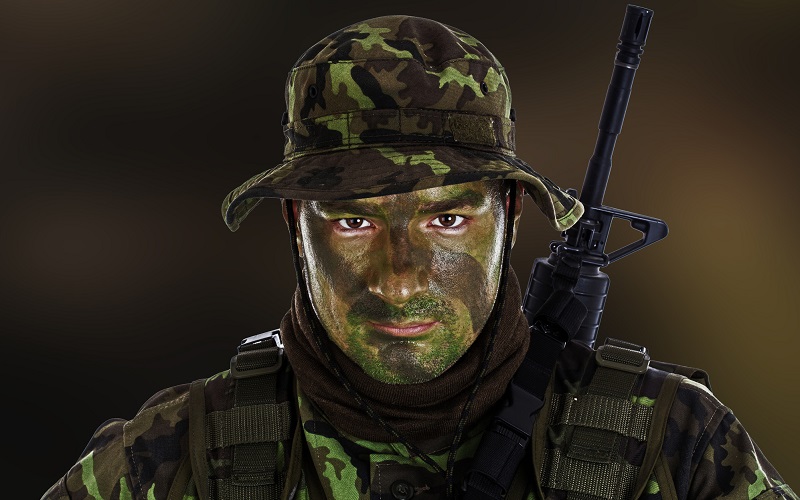
Hunting face paint keeps you a little more concealed and prevents your prey from catching your scent as easily.
Hunting face paint isn’t just something you use to soup up your hunting photos for social media; it’s a tool to be used by serious hunters, and it’s ridiculously inexpensive (and easy) to apply. Grab a tube, get in the tree stand, and wait for your prey.
Resources:

